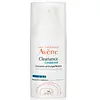What's inside
What's inside
 Key Ingredients
Key Ingredients

 Benefits
Benefits

 Concerns
Concerns

 Ingredients Side-by-side
Ingredients Side-by-side

Water
Skin ConditioningAlcohol
AntimicrobialGlycerin
HumectantPropanediol
SolventDimethicone
EmollientTriethylhexanoin
MaskingCamellia Kissi Seed Oil
EmollientButylene Glycol
HumectantCetearyl Alcohol
EmollientMethyl Methacrylate Crosspolymer
Ipomoea Batatas Root Extract
Skin ConditioningButyrospermum Parkii Butter
Skin ConditioningAmmonium Acryloyldimethyltaurate/Vp Copolymer
Dipropylene Glycol
HumectantPhenoxyethanol
PreservativeBoron Nitride
AbsorbentGlyceryl Stearate
EmollientPEG-100 Stearate
Tocopheryl Acetate
AntioxidantParfum
MaskingCetearyl Glucoside
EmulsifyingDimethicone Crosspolymer
Emulsion StabilisingCaprylyl Glycol
EmollientSorbitan Laurate
EmulsifyingXanthan Gum
EmulsifyingPropylene Glycol
HumectantHydrolyzed Silk
HumectantSodium Hyaluronate
HumectantHydroxyethylcellulose
Emulsion StabilisingAcetyl Dipeptide-1 Cetyl Ester
Skin ConditioningPhytic Acid
Sodium Benzoate
MaskingSodium Citrate
BufferingHydrochloric Acid
BufferingCitric Acid
BufferingTocopherol
AntioxidantPalmitoyl Oligopeptide
CleansingCI 14700
Cosmetic ColorantCI 19140
Cosmetic ColorantWater, Alcohol, Glycerin, Propanediol, Dimethicone, Triethylhexanoin, Camellia Kissi Seed Oil, Butylene Glycol, Cetearyl Alcohol, Methyl Methacrylate Crosspolymer, Ipomoea Batatas Root Extract, Butyrospermum Parkii Butter, Ammonium Acryloyldimethyltaurate/Vp Copolymer, Dipropylene Glycol, Phenoxyethanol, Boron Nitride, Glyceryl Stearate, PEG-100 Stearate, Tocopheryl Acetate, Parfum, Cetearyl Glucoside, Dimethicone Crosspolymer, Caprylyl Glycol, Sorbitan Laurate, Xanthan Gum, Propylene Glycol, Hydrolyzed Silk, Sodium Hyaluronate, Hydroxyethylcellulose, Acetyl Dipeptide-1 Cetyl Ester, Phytic Acid, Sodium Benzoate, Sodium Citrate, Hydrochloric Acid, Citric Acid, Tocopherol, Palmitoyl Oligopeptide, CI 14700, CI 19140
 Reviews
Reviews

Ingredients Explained
These ingredients are found in both products.
Ingredients higher up in an ingredient list are typically present in a larger amount.
Glycerin is already naturally found in your skin. It helps moisturize and protect your skin.
A study from 2016 found glycerin to be more effective as a humectant than AHAs and hyaluronic acid.
As a humectant, it helps the skin stay hydrated by pulling moisture to your skin. The low molecular weight of glycerin allows it to pull moisture into the deeper layers of your skin.
Hydrated skin improves your skin barrier; Your skin barrier helps protect against irritants and bacteria.
Glycerin has also been found to have antimicrobial and antiviral properties. Due to these properties, glycerin is often used in wound and burn treatments.
In cosmetics, glycerin is usually derived from plants such as soybean or palm. However, it can also be sourced from animals, such as tallow or animal fat.
This ingredient is organic, colorless, odorless, and non-toxic.
Glycerin is the name for this ingredient in American English. British English uses Glycerol/Glycerine.
Learn more about GlycerinWater. It's the most common cosmetic ingredient of all. You'll usually see it at the top of ingredient lists, meaning that it makes up the largest part of the product.
So why is it so popular? Water most often acts as a solvent - this means that it helps dissolve other ingredients into the formulation.
You'll also recognize water as that liquid we all need to stay alive. If you see this, drink a glass of water. Stay hydrated!
Learn more about Water